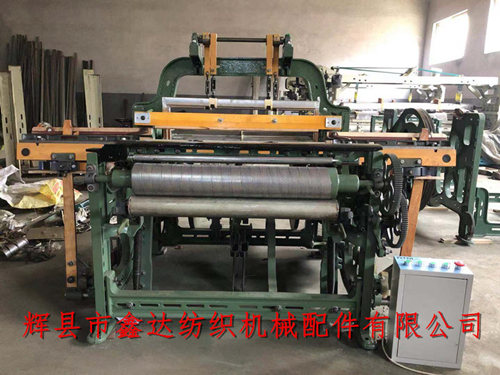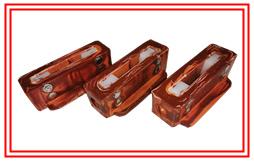The Application of Materialist Dialectics in the Maintenance of Weaving Machines

Chairman Mao once said, "Rational knowledge depends on perceptual knowledge, and perceptual knowledge needs to be developed into rational knowledge, which is the epistemology of dialectical materialism." Loom repairmen must comprehensively and correctly understand the causes and prevention methods of loom failures, and must also follow this principle.
For example, when we repair the "shuttle track rolling shuttle" in a loom malfunction, we have learned from practice that it is caused by reasons such as breakage of the picking components, entanglement of the broken warp, falling of the heald frame components, incorrect position of the shuttle box components, and improper coordination between the picking and opening times. How can these numerous and complex reasons lead to "rolling shuttles"? After theoretical analysis, it can be concluded that they cause a decrease in shuttle flight speed, obstruction of shuttle passages, or incorrect shuttle flight direction. After forming this concept, we have a clear direction when repairing such faults.

Eliminating fabric defects is also the same. In our daily work, we find that "rotten edges" are caused by factors such as incorrect shuttle cores, incomplete edge warp, confusion, or poor grip of edge supports. But after analysis, it is found that these reasons will cause the fabric width at the weaving mouth to narrow, causing an increase in the gap between it and the reed width. As a result, during the beating process, when the reed width overlaps with the weaving mouth width, the edge reed teeth will break the edge segments of the weft yarn woven into it, resulting in "rotten edges". With this understanding, we will take the initiative to do a good job in shuttle tube fitting, edge warp management, edge support renovation, and other work that can reduce the gap between the weaving width and the reed width, in order to reduce the occurrence of "rotten edge" fabrics.
Dialectical materialism holds that all things are not static, but constantly changing, and weaving production is no exception. For example, repairing a damaged car with poor heald lifting, replacing it with a new heald lifting belt and adjusting the height of the heald frame, and after the loom has been running for a period of time, the height of the heald frame must be adjusted again. This is because the new hanging harness will inevitably elongate after being used for a period of time, causing the previously calibrated position of the harness frame to become unqualified. The same applies to other components of the loom, such as knots, loops, shuttle plates, shuttle nose, gears, bushings, etc., which constantly change during movement. The only difference is the speed and location of the changes. The changes in conditions during the weaving production process are not limited to the mechanical state, but also include various other aspects, such as semi-finished product quality, workshop temperature and humidity, etc.

In addition to not viewing things from a static perspective, we cannot view things from an isolated perspective. For example, there is an inherent connection between various faults and defects in a loom, such as rolling shuttles, flying shuttles, and grinding shuttles; Thin weft, dense roads, cloud weaving, and so on are all related to each other. If we use an isolated rather than interconnected perspective to repair a faulty car, not only can we not completely fix the problem, but sometimes it can also lead to other problems. Of course, the internal connections in weaving production are not limited to faults and defects, but exist in various aspects.
Chairman Mao taught us: "When studying any process, if there are two or more complex and contradictory processes, we must use our best efforts to identify the main contradiction, grasp this main contradiction, and all problems will be easily solved
When analyzing the causes of loom malfunctions and defects, we also need to make every effort to identify their main causes. Seizing this main cause can completely eliminate faults and defects. But in the specific process of repairing a damaged car, how to identify the dominant cause among the numerous and complex reasons? It is not only necessary to have rich practical experience, but also to learn to analyze problems from the perspective of dialectical materialism

&Nbsp& Nbsp& Nbsp; For example, we repair two broken cars with skip defects on the rolling shuttle. From the surface, the situation of these two broken cars is similar, both of which have problems with the shuttle feeding and opening parts: the first machine has a slightly lower shuttle feeding force and an incorrect position of the heald frame; The second machine has insufficient shuttle delivery force and a lower position of the heald frame. Of course, it is necessary to have a precise understanding of these causes, which requires rich practical experience. However, in order to quickly and correctly repair the damaged car, it is necessary to use a materialistic and dialectical method to compare and analyze these causes and identify the main causes. For machine A, based on analysis, it is necessary to determine whether the shuttle can reach the predetermined position of the opposite shuttle box in a timely manner under clear shed conditions? If the answer is affirmative, it indicates that the lower throwing force of the machine is not the main reason, but the incorrect position of the lifting harness is the main reason. For machine B, if the shuttle still cannot reach the predetermined position of the opposite shuttle box in a clear shed, after analysis, it can be determined that insufficient shuttle throwing force is the main reason. If we make repairs without analysis, it will not only take a long time, but it is also likely to suffer setbacks. If the emphasis is placed on adding shuttle force to the A machine, at first glance, it may make the shuttle squeeze through the shed without rolling the shuttle, but the skip defects are not only not eliminated, but also worsen their appearance. For machine B, if only great efforts are made to correct the position of the heald frame, the result will still be continued shuttle rolling.

In addition, when the temperature and humidity in the workshop are low, a large number of machine shuttles may not be positioned correctly, resulting in poor induction and rolling faults. If the main contradiction cannot be grasped, adjust the throwing force and buffering effect one by one to achieve correct positioning of the shuttles. After a period of time, the corresponding humidity in the workshop will rise again, which will inevitably cause changes in the positioning of individual machine shuttles. This will inevitably require adjusting the throwing force and buffering effect one by one machine, In fact, they are doing some laborious and unprofitable work.
Of course, there are many examples of these types mentioned above. Therefore, loom maintenance workers must strive to learn Chairman Mao's works, understand materialist dialectics, and apply them in the repair of broken cars, pushing the operating state of the loom to a new higher level.








